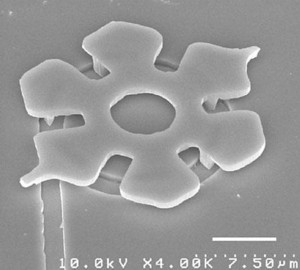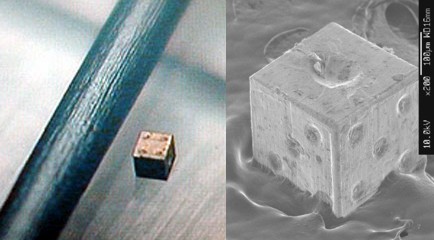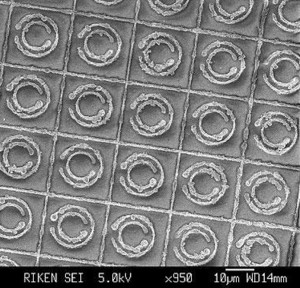 On January 18, researchers from Japan's Institute of Physical and Chemical Research (RIKEN) and the University of Michigan announced the development of a technique for engineering "mini-plants" that are 1/10th their ordinary size.
On January 18, researchers from Japan's Institute of Physical and Chemical Research (RIKEN) and the University of Michigan announced the development of a technique for engineering "mini-plants" that are 1/10th their ordinary size.
The researchers claim it is possible to tailor the size of plants by manipulating the genes that regulate the activity of growth hormones. The technique is expected to lead to the creation of miniaturized versions of decorative houseplants, as well as dwarf crops that are easier to harvest and more resistant to wind damage.
In studying dwarf varieties of rice and wheat created through ordinary hybridization, the researchers found damage to the genes that synthesize gibberellin, a growth hormone. When researchers looked for a mechanism to control the growth hormone, they discovered that the GAMT1 and GAMT2 genes commonly found in plants were responsible for producing an enzyme that neutralizes gibberellin.
When the researchers engineered strains of petunias and thale cress (Arabidopsis thaliana) in which the two genes were constantly expressed, the plants grew to 1/10th their ordinary size. When plants were administered gibberellin, they grew to their normal size, demonstrating that the size of plants can be freely adjusted.
[Source: Yomiuri]


 Researchers from Japan's National Institute of Advanced Industrial Science and Technology (
Researchers from Japan's National Institute of Advanced Industrial Science and Technology (

 Researchers at Kyoto University have developed new semiconductor laser technology that allows the shape of beams to be tailored freely and that can output beams up to 10 times more compact than existing beams ? a development that could lead to a tenfold increase in the storage capacity of optical discs. Research results were published in the June 22 edition of British science journal
Researchers at Kyoto University have developed new semiconductor laser technology that allows the shape of beams to be tailored freely and that can output beams up to 10 times more compact than existing beams ? a development that could lead to a tenfold increase in the storage capacity of optical discs. Research results were published in the June 22 edition of British science journal  On May 8, researchers from
On May 8, researchers from 
 When light passes through material such as glass, a portion of its energy is lost as it reflects off the material's surface. Researchers at Japan's Institute of Physical and Chemical Research (
When light passes through material such as glass, a portion of its energy is lost as it reflects off the material's surface. Researchers at Japan's Institute of Physical and Chemical Research (